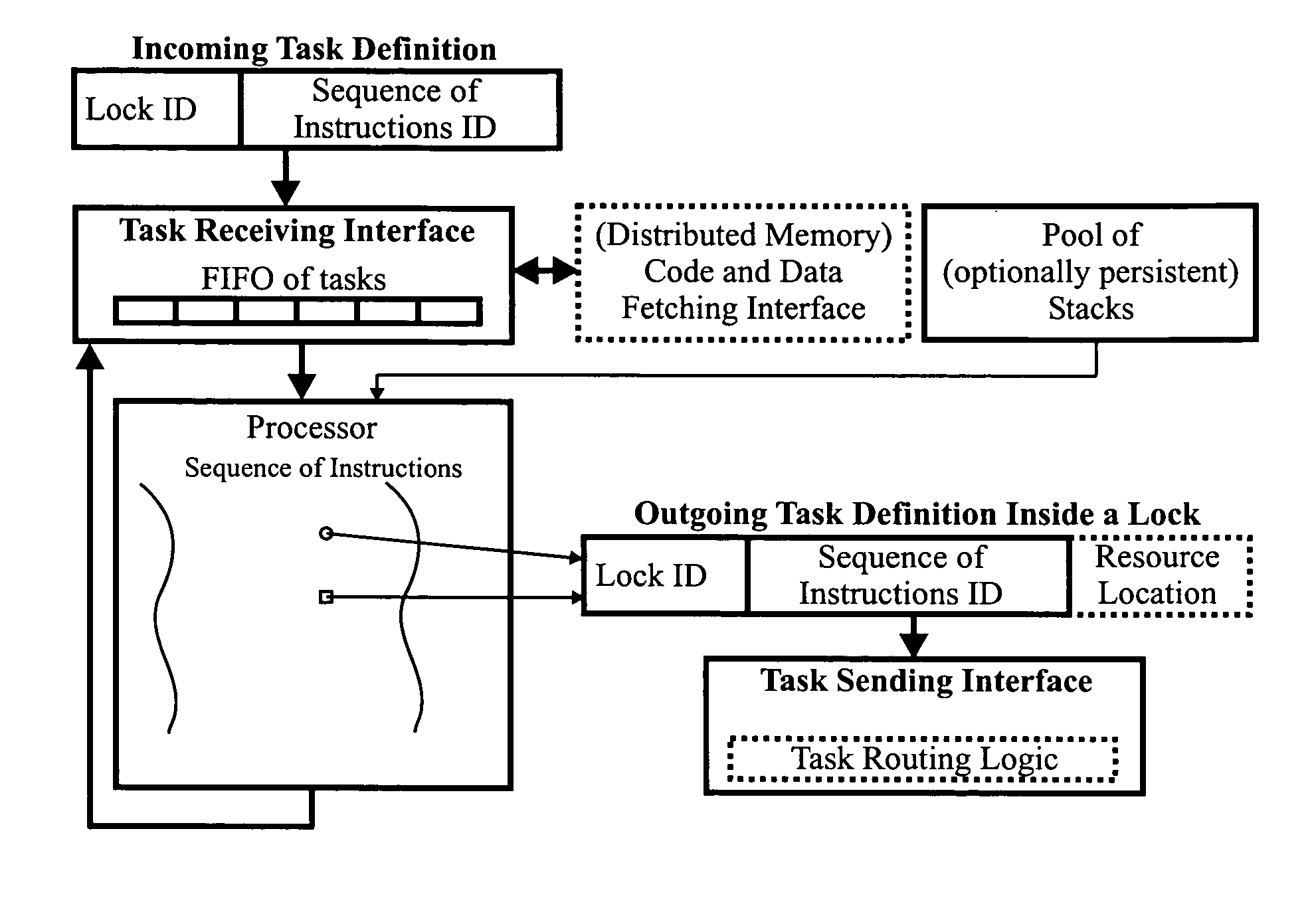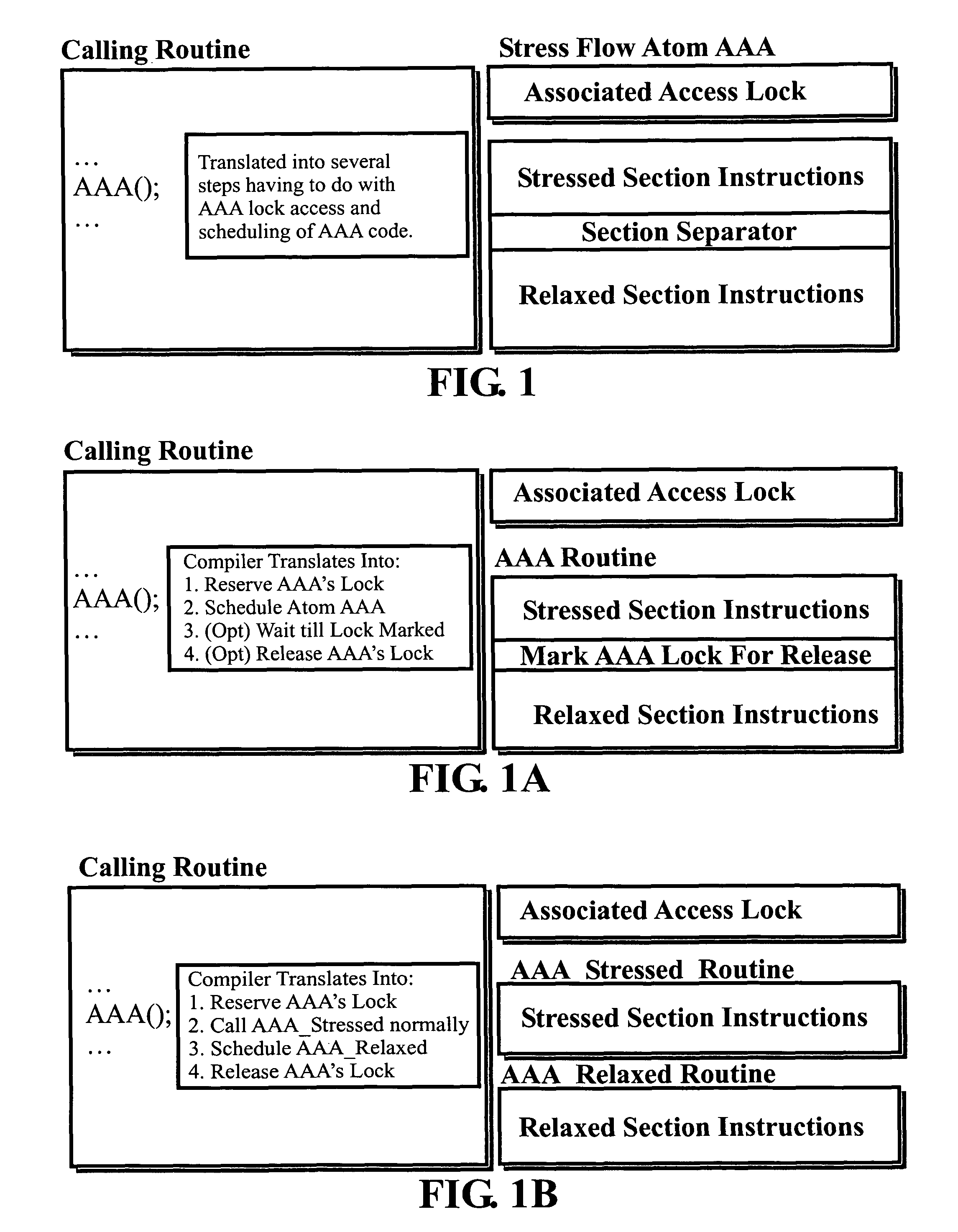This is in total contrast to prior systems that had similar goals, but which were unable to accomplish them in such a universal and efficient fashion and incapable of producing self-scalable code that could naturally run on a large number of processors at the same time.
This is probably the simplest parallel problem possible as there are no interactions and no synchronization needs between calculations of different prime numbers.
It is restraining parallelism when such restraint is needed that generally may require some extra work.
Due to complete lack of universal redundant programming methodologies, decisive majority of the
software makes infallibility and error-free operation of the
computer hardware the key underlying principle.
This, of course, costs money.
Suppose our computer quality norms allow some program to have one chance in a million to yield incorrect result due to hardware failure (very low expectation).
The key problem with prior art systems is that they could not smoothly transition from constrained or sequential execution to unconstrained parallel or to
dataflow model and back when it was required.
It is often suspected that visual programming does not get as much use as it should.
These limitations definitively no longer exist, yet most professional programming is still done in text form.
Visual programming was introduced with great pain where it was really unavoidable—for example for designing dialog boxes, human form interfaces, or instrument interfaces in control /
instrumentation markets.
However, in
spite of huge effort toward developing visual programming methods, complex, professional software is still very rarely developed in visual languages.
At present time, it would still be quite difficult to even try to propose developing code for an
operating system or even a professional word processor in any prior art visual language.
As
sequential control-flow code is fundamentally one-dimensional, it is unnatural and hard, if not impossible, to represent it graphically in two dimensional space.
This would have been a problem with older processors that used “flat” (also called unsegmented and non-virtually mapped)
memory model.
As briefly mentioned in discussion of code from FIGS. 8A and 8B, the management of stacks for stress-flow atoms creates some challenges.
Normally, the first stress flow atom finishing its calculations would result in destroying the stack or allocating it to another micro-thread.
The problem could be avoided by allocating all local-use data on automatic heap rather than stack, but this solution, (resulting in some code limitation that would have to be rigidly enforced) would be fairly inefficient in case of many small variables being constantly allocated and de-allocated from the heap.
Another issue affecting construction of stack interfaces is the need of handling the default path calls for ordered and similar stress-flow atoms.
On some large number processor
system, several parts of such scheme would be inefficient even without default path support.
In the situation shown on FIG. 29A, if node C was overloaded and node A was relatively free, A would be assigned the new task due to its relative closeness to both B & C even if say node D was significantly more free than A. Performance problems with this solution come from the fact that the new node and especially new local stack had to be assigned up front at firing time, based on node loads at
time moment possibly way ahead of the moment X.aaa will actually be executed.
The second performance problem comes from the fact that due to need to write parameters for the new stress-flow instance, the node selected for X.aaa has to be close to the node that fired it (in this case node B).
It may appear that not much can be done with the problem described above.
But, there is nothing preventing us from reserving proper space there and storing the stress-flow atom parameters themselves.
The only downside would be that doing something like that is impossible with currently available compilers.
This may seem as a little unorthodox and complex, but the advantages, however are enormous and well worth the cost.
The set of mechanisms described so far may seem fairly complex.
This is important because otherwise the overhead of switching the stress-flow atoms (which are essentially micro processes executing separately) could make the present invention impractical.
This has resulted in previously impossible level of simplification of parallel code design.
If one hardware processor (even in a very-large number of processors
system) could only be hosting one stress atom at a time, it would mean very inefficient use of resources as a processor hosting a suspended stress-flow atom could not execute a more recently fired (but ready to run) stress-flow atom.
The biggest obstacle in implementing and testing the present invention was the fact that pretty much all aspects of processor
interfacing were done in fairly unorthodox matter.
In fact, no synchronization tools offered by an existing
operating system were used.
Some standard terminology had to be used in description here (like critical-sections) but all the critical sections used were custom-made and fairly non-standard as well.
In many people's view, this is the very characteristic that has doomed all previous methods, limiting most practical
parallel software development into sequential design in Fortran or C where elaborate compilers tried to parallelize software written as sequential.
But the problem with such architecture is that it either uses the same
memory bus for all processors or it uses crossbar circuitry for connecting memory with processors.
The first solution makes the
system bus the hardware
bottleneck resulting in situation where only a few processors can be used efficiently.
The second solution of using the crossbar is quite expensive and not easy to miniaturize.
It results in complex, high-speed, energy-consuming circuitry that connects multiple processors with multiple memory blocks.
The issue is very important, because it only makes sense to spread newly fired atoms around the mesh as long as
delay of accessing remote data is not higher than cost of waiting for
processing resources to be available closest to where the data resides.
Therefore, key to performance of stress-flow design is atomization of all code into a large
mass of mini-threads and being able to instantly reassign scheduled atoms from one node to another—not completely accurate / optimal original choice of node to run a newly fired atom on.
No such self-regulation is possible as far as optimizing node hoping is concerned.
Wrongly assigned stress-flow atoms will push new calculations away from the data that needs to be accessed and the problem will compound itself rather than self-correct.
Doing that completely accurately would be
time consuming and the cost of it could outweigh benefits.
In
spite of its limitation, the method was quite successful due to low cost—result of utilization of often unused
processing power of many computers connected to a network.
Programming / communication method used there is rather crude and incapable of implementing truly complex systems where large number of many dissimilar software objects communicates with one another.
There were attempts to encapsulate the crude, low-level
message processing interface used for programming such architecture in object-oriented programming wrappers, but no universal
programming method was proposed for such an architecture, much less a universal
programming method compatible with other parallel systems.
The most challenging part of any “virtual parallel platform” is lack of any direct means for platform participants accessing each other's memory which necessitates
copying data back and forth in order for
parallel processing to take place.
If the means of communication between participating computers are relatively slow network interfaces, the overhead of the communication becomes the most important system management issue.
However, this approach totally prevents high-level structural
software design concepts and as a universal-purpose computing platform is as efficient as programming complex software systems all in
assembly language would be.
The method of calculation described above might appear imprecise and crude, but is sufficient to determine location information needed to allocate newly fired atom to a node that will run it.
If we didn't do that,
copying would rarely be worth it, and what's worse, the original node's
algorithm would try to copy the data to yet another work-free node, and then another, and so on.
The only thing that has to be remembered about it is that due to need of
copying data, this platform is less forgiving performance-wise if data and parameters are declared in clumsy fashion and, for example, “const” data is not declared as such, forcing unnecessary copying.
Without such a
queue a processor would not have anything else ready for it do after a currently running task has been suspended through a reservation attempt on some lock while schedule instructions would have to suspend the caller in cases when there were no available processors to take the task—complicating the scheme and making it far less efficient.
Data copying pre-fetching should only be performed in architectures such as virtual parallel networks where the overhead of trying to do
data access on
byte-by-
byte as needed basis would be prohibitive.
In such a case, the preferred location for the stack is in the local memory space of the target node: The problem is that at the time of writing the new task actual parameters we do not know the target node yet, and it would be better not to have to make final determination of where the new task should run until the moment when it actually runs.
Having to firmly assign target node for new task way ahead of time would therefore introduce costly inflexibility.
For these reasons, allocating the stack for the new task way ahead of time only to store parameters passed to it there is a very bad solution.
This scheme would however be far more complex and less efficient than using the lock as the actual parameter
storage area.
This code works fine—but it isn't completely optimal since SCHEDULE get_a will suspend the calling task until the return value is available, which means SCHEDULE get_b will not be executed till then—which could result in completely unnecessary delays in some cases.
Return value
processing and corresponding WAIT RELAX command are rarely needed with connector constructs since trying to return a single value from many targets does not make much sense.
Both methods work fine, the second one is less efficient but easier to implement without writing special
compiler code.
The characteristics influencing the design of TSI and TRI in this situation include the fact that each such system has its own local memory and can only access the memory of the other nodes through the network medium, placing substantial penalty on it.
The operations needed are short, requiring sending one message and in some cases waiting for one response.
Constant demand of increase in performance of computer systems and approaching physical limits of single-processor systems combined with lack of accepted, universal parallel programming methods had a very negative effect on architectures of computer systems.
Such solution is very messy, with gains non-proportional to costs involved, which best demonstrates the urging need for universal parallelism in mainstream computing.
Doing 3D rendering on main processor quickly became impossible and forced the need for extra processors doing it.
This only solved the problem partially, because the video card obviously cannot produce the
graphics on its own.
This forced costly and complex caching of data on both ends, dedicated energy consuming high-speed busses to send the data between main processor and the
graphics processors, etc.
The problem was lack of good method of programming such architecture.
The redundancy aspect of computing is something that has seen a lot of effort lately.
Such redundancy is obviously very limited—if the main processor or the redundant hard-drives controller fails, the whole system is still completely grounded.
The critical difference, however, is that these features are currently only provided as expensive custom extensions to existing systems that by their originating nature were built mostly as single-threaded, single-processor code.
 Login to View More
Login to View More  Login to View More
Login to View More 


